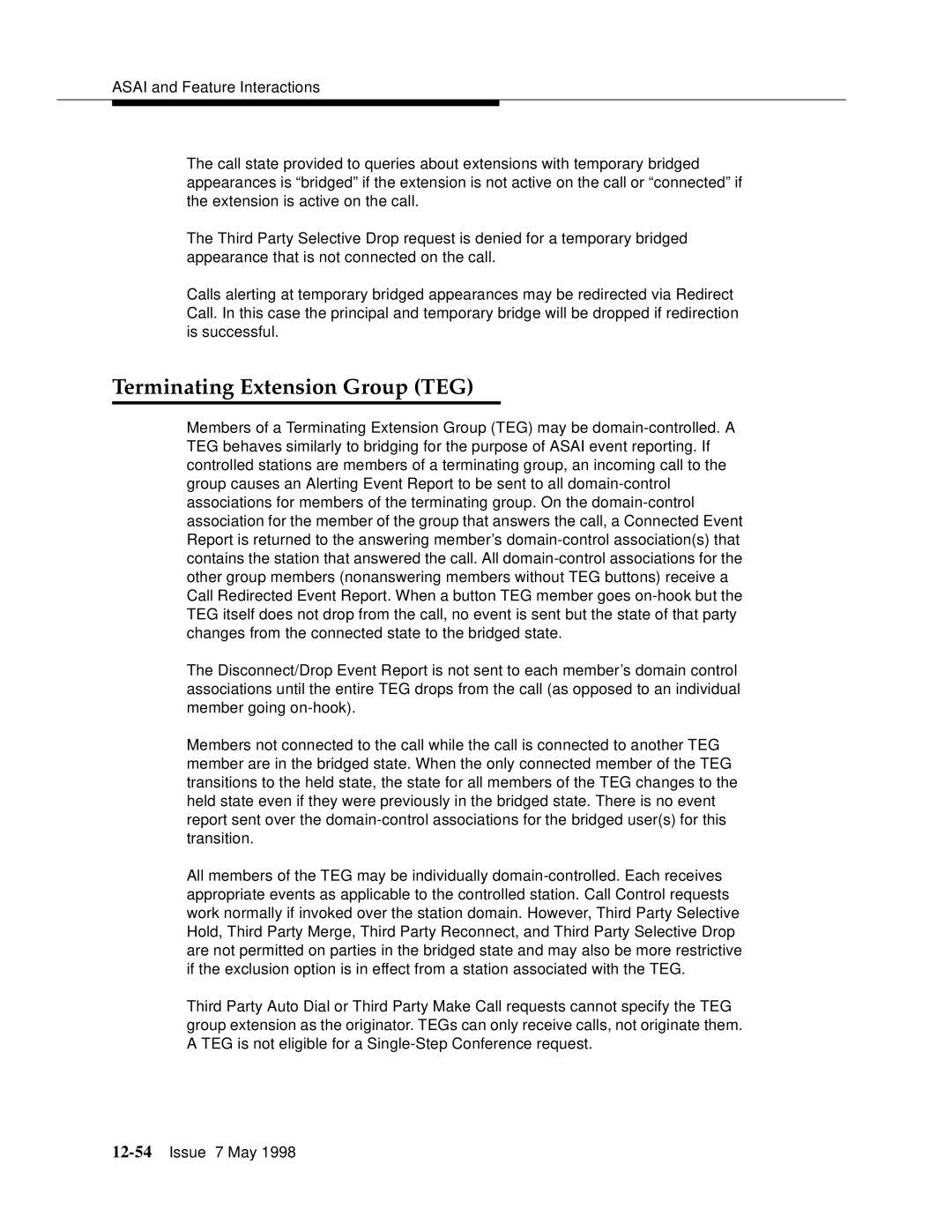
ASAI and Feature Interactions
The call state provided to queries about extensions with temporary bridged appearances is “bridged” if the extension is not active on the call or “connected” if the extension is active on the call.
The Third Party Selective Drop request is denied for a temporary bridged appearance that is not connected on the call.
Calls alerting at temporary bridged appearances may be redirected via Redirect Call. In this case the principal and temporary bridge will be dropped if redirection is successful.
Terminating Extension Group (TEG)
Members of a Terminating Extension Group (TEG) may be
The Disconnect/Drop Event Report is not sent to each member’s domain control associations until the entire TEG drops from the call (as opposed to an individual member going
Members not connected to the call while the call is connected to another TEG member are in the bridged state. When the only connected member of the TEG transitions to the held state, the state for all members of the TEG changes to the held state even if they were previously in the bridged state. There is no event report sent over the
All members of the TEG may be individually
Third Party Auto Dial or Third Party Make Call requests cannot specify the TEG group extension as the originator. TEGs can only receive calls, not originate them. A TEG is not eligible for a
